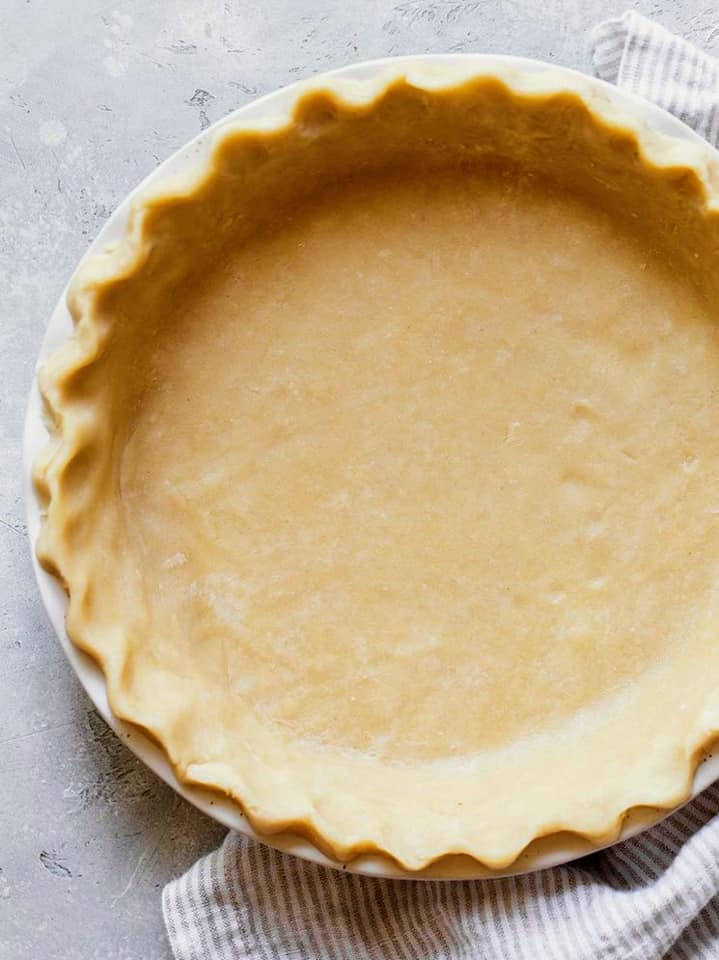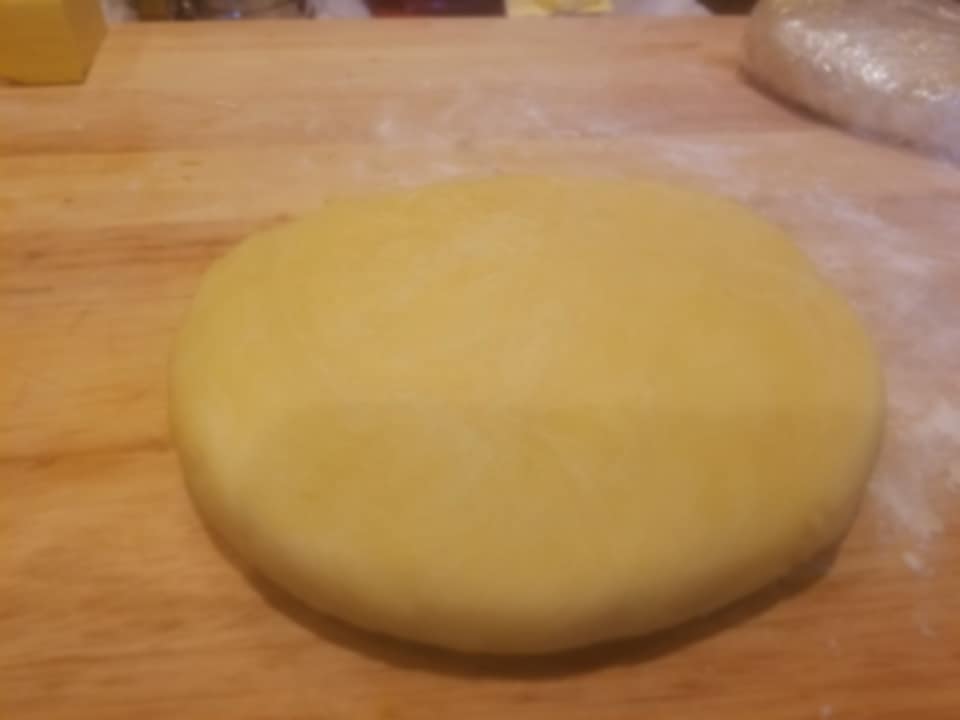The Perfect Butter Pie Dough

Ingredients
6 oz. (1-1/2 cups) unbleached all-purpose flour
1 tsp. granulated sugar
3/8 tsp. table salt
4 oz. (8 Tbs.) cold unsalted European butter, cut into 3/4-inch pieces
3 to 4 Tbs. ice water

Steps
Make the dough
- Put the flour, sugar, and salt in a medium bowl and stir with a rubber spatula or a fork to combine.
- Add the butter to the bowl. Rub the cold chunks of butter between your fingertips, smearing the butter into the flour to create small (roughly 1/4-inch) flakes of fat.
- Drizzle 3 Tbs. ice water over the flour mixture. Stir with the spatula or fork, adding 1 Tbs. more water if necessary, until the mixture forms a shaggy dough that’s moist enough to hold together when pressed between your fingers.
- With well-floured hands, gently gather and press the dough together, and then form it into a disk with smooth edges. Wrap the dough in plastic and chill for at least 1 hour, but preferably 2 to 4 hours, before rolling.
Roll the dough
- Let the chilled dough sit at room temperature to soften slightly—it should be cold and firm but not rock hard.
- Depending on how long the dough was chilled, this could take 5 to 20 minutes. When ready to roll, lightly flour the countertop or other surface (a pastry cloth, silicone rolling mat, or parchment on a counter also works great) and position the rolling pin in the center of the dough disk.
- Roll away from you toward 12 o’clock, easing the pressure as you near the edge to keep the edge from becoming too thin.
- Return to the center and roll toward 6 o’clock. Repeat toward 3 and then 9 o’clock, always easing the pressure at the edges and picking up the pin rather than rolling it back to the center.
- Continue to “roll around the clock,” aiming for different “times” on each pass until the dough is 13 to 14 inches in diameter and about 1/8 inch thick.
- Try to use as few passes of the rolling pin as possible. After every few passes, check that the dough isn’t sticking by lifting it with a bench knife (dough scraper). Re-flour only as needed—excess flour makes a drier, tougher crust.
- Each time you lift the dough, give it a quarter turn to help even out the thickness.
Line the pie plate
- Gently transfer the dough to a 9-inch pie plate, preferably metal, by folding it in half and unfolding it into the plate. Do not stretch the dough as you line the pan, or it will spring back when baked.
- Gently lift the outer edges of the dough to give you enough slack to line the sides of the pan without stretching the dough.
- Trim the overhanging dough to 1 inch from the edge of the pan. Roll the dough under itself into a cylinder that rests on the edge of the pan.
Crimp the edge
- To crimp the edge, have one hand on the inside of the edge, and one hand on the outside, and use the index finger of the inside hand to push the dough between the thumb and index finger of the outside hand to form a U or V shape.
- Repeat around the edge of the pie plate, creating a crimped edge whose individual flutes are about an inch apart. As you are going along, if you notice that the edge is not perfectly symmetrical and that the amount of dough, you’ll have to crimp seems sparse in places, take a bit of trimmed scrap, wet it with a drop or two of water, and attach it to the sparse area by pressing it firmly into place.
- Prick the sides and bottom of the crust all over with a fork. Refrigerate until firm, about 1 hour or overnight. This will relax the dough and help prevent the edges from caving in.
Blind bake the crust
- Position a rack in the center of the oven and heat the oven to 425°F.
- Line the chilled piecrust with foil and fill it with dried beans or pie weights. Bake for 15 minutes; remove the foil and the beans or weights.
- Reduce the oven temperature to 375°F.
- Bake until the bottom looks dry but is not quite done and the edges are light golden, 5 to 7 minutes more. Let cool.
Tagged Pie
